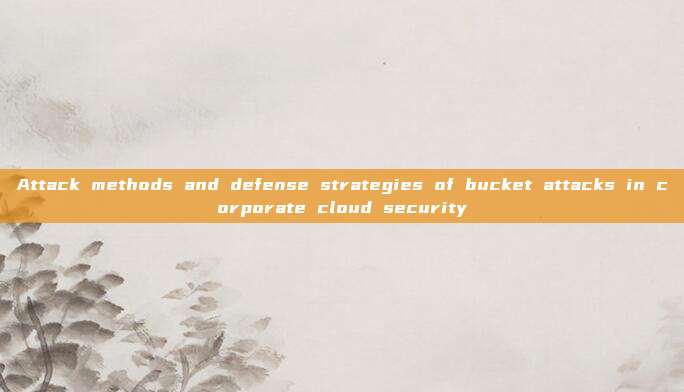Introduction
With the popularization of cloud computing, more and more enterprises are storing data in buckets provided by cloud service providers such as Amazon S3, Google Cloud Storage, and Azure Blob Storage. The flexibility and scalability of buckets make them the preferred choice for enterprise data storage. However, the security of buckets has also become one of the important challenges faced by enterprises. Due to improper configuration or neglect of security policies, buckets may become targets for attackers, leading to data leakage, tampering, and even service interruption.
This article will delve into the common attack methods of buckets in corporate cloud security, including bucket public access, bucket bucket blasting, specific bucket policy configuration, bucket object traversal, arbitrary file upload and overwrite, AccessKeyId/SecretAccessKey leakage, bucket hijacking and subdomain takeover, writable bucket configuration, modifying the bucket policy to Deny to瘫痪 the business, modifying the S3 resources referenced by the website for phishing, and so on, and illustrate the implementation methods of these attacks through example code. At the same time, we will provide some defense strategies to help enterprises better protect their cloud storage resources.
1. Common methods of bucket attacks
1.1 Bucket public access

Attack method description:
Improper configuration of bucket access permissions is one of the most common attack methods. Many enterprises may mistakenly set the bucket to "public access" when creating the bucket, which means any internet user can access the content in the bucket. Attackers can access the bucket via simple URL access or use tools to scan public buckets to obtain sensitive data.
Example code:
Assuming an Amazon S3 bucket is incorrectly configured for public access, an attacker can list all files in the bucket using the following Python code:
python
import boto3
# Initialize S3 client
s3 = boto3.client('s3')
# Bucket name
bucket_name = 'example-public-bucket'
# List files in the bucket
response = s3.list_objects_v2(Bucket=bucket_name)
if 'Contents' in response:
for obj in response['Contents']:
print(f"File: {obj['Key']}")
else:
print("No files found in the bucket.")Defense strategies:
Principle of least privilege:Ensure that the access permissions of the bucket follow the principle of least privilege, allowing only necessary users or applications to access.
Regular audit:Regularly check the access permission configuration of the bucket to ensure there is no unexpected public access.
Use IAM policies:Strictly control who can access the bucket through IAM policies to avoid overly permissive permissions.
1.2 Bucket bucket blasting
Attack method description:
Bucket bucket brute force refers to attackers guessing or brute-forcing bucket names to obtain access permissions to the bucket. This type of attack usually targets buckets using simple or common names.
Example code:
Attackers can try to enumerate bucket names with the following code:
python
import boto3
# Initialize S3 client
s3 = boto3.client('s3')
# List of common bucket names
common_bucket_names = ['backup', 'data', 'logs', 'archive']
# Try to access the bucket
for bucket_name in common_bucket_names:
try:
response = s3.list_objects_v2(Bucket=bucket_name)
if 'Contents' in response:
print(f"Bucket {bucket_name} is accessible!")
except Exception as e:
print(f"Bucket {bucket_name} is not accessible: {e}")Defense strategies:
Use complex bucket names:Avoid using simple or common bucket names to increase the difficulty for attackers to guess.
Enable bucket access logging:Enable bucket access logging to monitor abnormal access behavior.
Limit bucket access:Limit the access range of the bucket through IP whitelists or other access control mechanisms.
1.3 Specific Bucket Policy Configuration
Attack method description:
The bucket policy is an important mechanism for controlling bucket access permissions. However, attackers may bypass bucket policies by means such as exploiting permission elevation of IAM roles or by cross-account access vulnerabilities.
Example code:
Assuming a bucket policy only allows access by a specific IAM role, but the attacker can exploit a permission elevation vulnerability in the IAM role to bypass the policy with the following code:
python
import boto3
# Initialize S3 client using an attacker-controlled IAM role
s3 = boto3.client('s3', aws_access_key_id='ATTACKER_ACCESS_KEY',
aws_secret_access_key='ATTACKER_SECRET_KEY')
# Bucket name
bucket_name = 'example-secure-bucket'
# Try to list files in the bucket
response = s3.list_objects_v2(Bucket=bucket_name)
if 'Contents' in respo评论已关闭